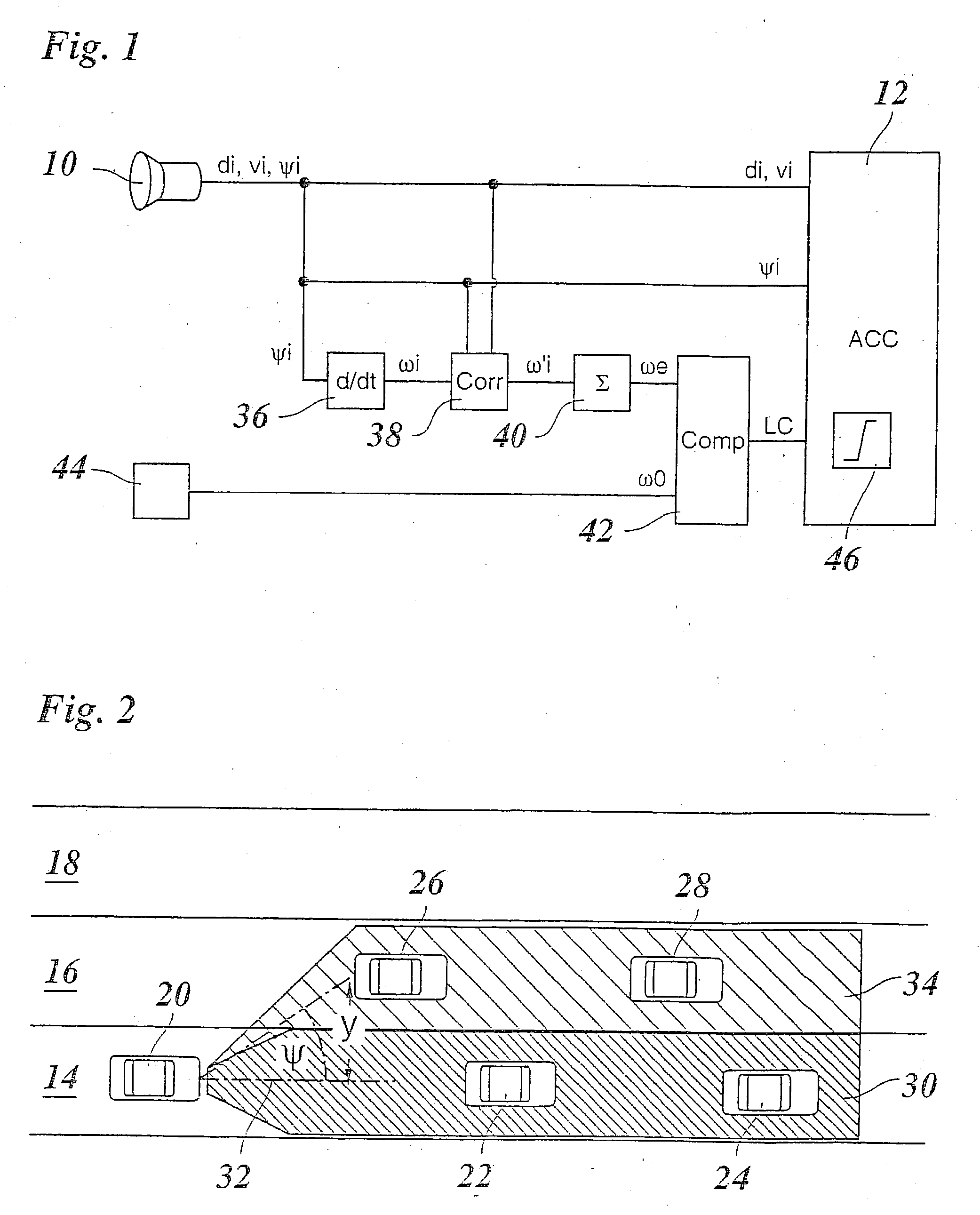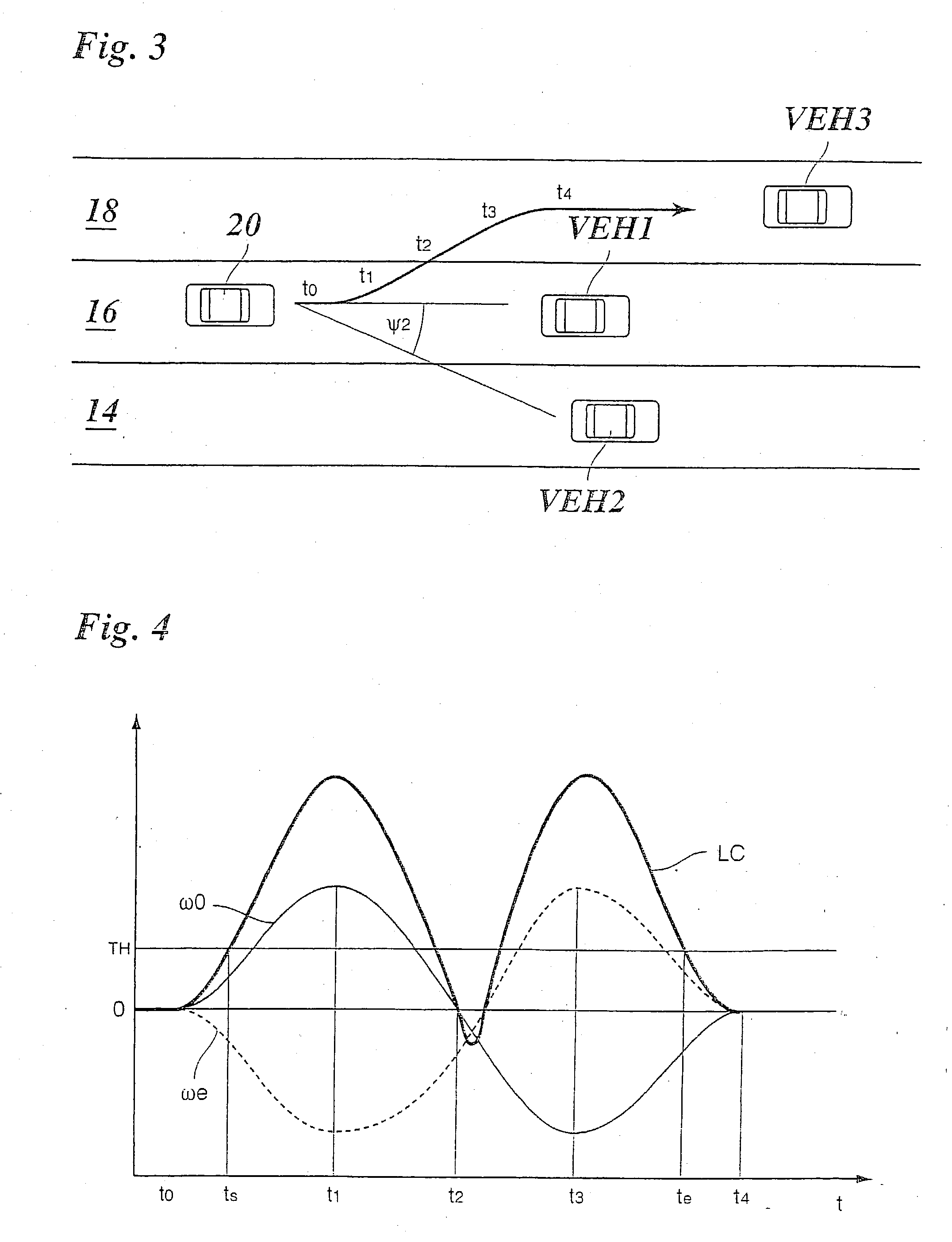Method for recognising a change in lane of a vehicle
a technology of lane change and vehicle, which is applied in the direction of process and machine control, using reradiation, instruments, etc., can solve the problems of unambiguous lane change, inability to accurately determine the travel corridor, and failure to enable the lane change to be unambiguous
- Summary
- Abstract
- Description
- Claims
- Application Information
AI Technical Summary
Benefits of technology
Problems solved by technology
Method used
Image
Examples
Embodiment Construction
[0027] Because the design and operating principle of a distance- and speed-regulating system, referred to below as an ACC system, are known as such, FIG. 1 shows only those components of such a system that are important for understanding the present invention.
[0028] A radar sensor 10 is provided as a locating device for vehicles traveling in front, and is mounted on the front of the regulated vehicle and periodically locates target objects situated in front of the vehicle, for example vehicles traveling in front, and stationary targets on the edge of the roadway. By evaluating the radar echo, signals are produced, either in the radar sensor itself or in a processing unit connected downstream, which indicate the distance d.sub.i, the relative speeds v.sub.i (in the radial direction), and the azimuth angles .psi..sub.i of the located objects. The azimuth angles here are defined with respect to the instantaneous straight-ahead direction of the vehicle. Positive azimuth angles correspon...
PUM
 Login to View More
Login to View More Abstract
Description
Claims
Application Information
 Login to View More
Login to View More - R&D
- Intellectual Property
- Life Sciences
- Materials
- Tech Scout
- Unparalleled Data Quality
- Higher Quality Content
- 60% Fewer Hallucinations
Browse by: Latest US Patents, China's latest patents, Technical Efficacy Thesaurus, Application Domain, Technology Topic, Popular Technical Reports.
© 2025 PatSnap. All rights reserved.Legal|Privacy policy|Modern Slavery Act Transparency Statement|Sitemap|About US| Contact US: help@patsnap.com



